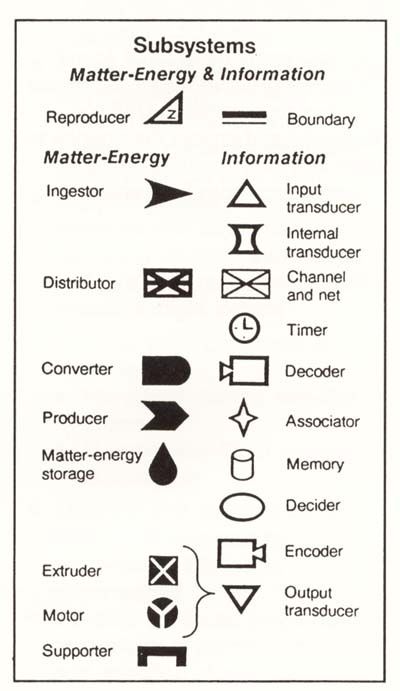
KEY
General living systems theory and analysis constitutes a rational way to begin to understand the human factors which should guide all planning of space missions. This theory is a conceptual integration of biological and social approaches to the study of living systems. Living systems are open systems that input, process, and output matter and energy, as well as information which guides and controls all their parts. In human organizations, in addition to matter and energy flows, there are flows of personnel, which involve both matter and energy but also include information stored in each person's memory. There are two types of information flows in organizations: human and machine communications and money or money equivalents. Twenty subsystem processes dealing with these flows are essential for survival of systems at all levels.
The general procedure for analyzing such systems is to map them in two- or three- dimensional space. This map of a lunar outpost indicates its subsystems and the major flows within it. Such an analysis would take into account the primary needs of human systems foraging for food and other necessary forms of matter and energy; feeding; fighting against environmental threats and stresses; fleeing from environmental dangers; and, in organizations which provide a comfortable, long-term habitat, perhaps reproducing the species. This study would analyze the effects on human social and individual behavior of such factors as weightlessness or 116 gravity; limited oxygen and water supplies; extreme temperatures; available light, heat, and power; varying patterns of light and dark, and so forth. A data bank or handbook could be developed of the values of multiple variables in each of the 20 subsystems of such a social system.


Back to Issues for Further Study